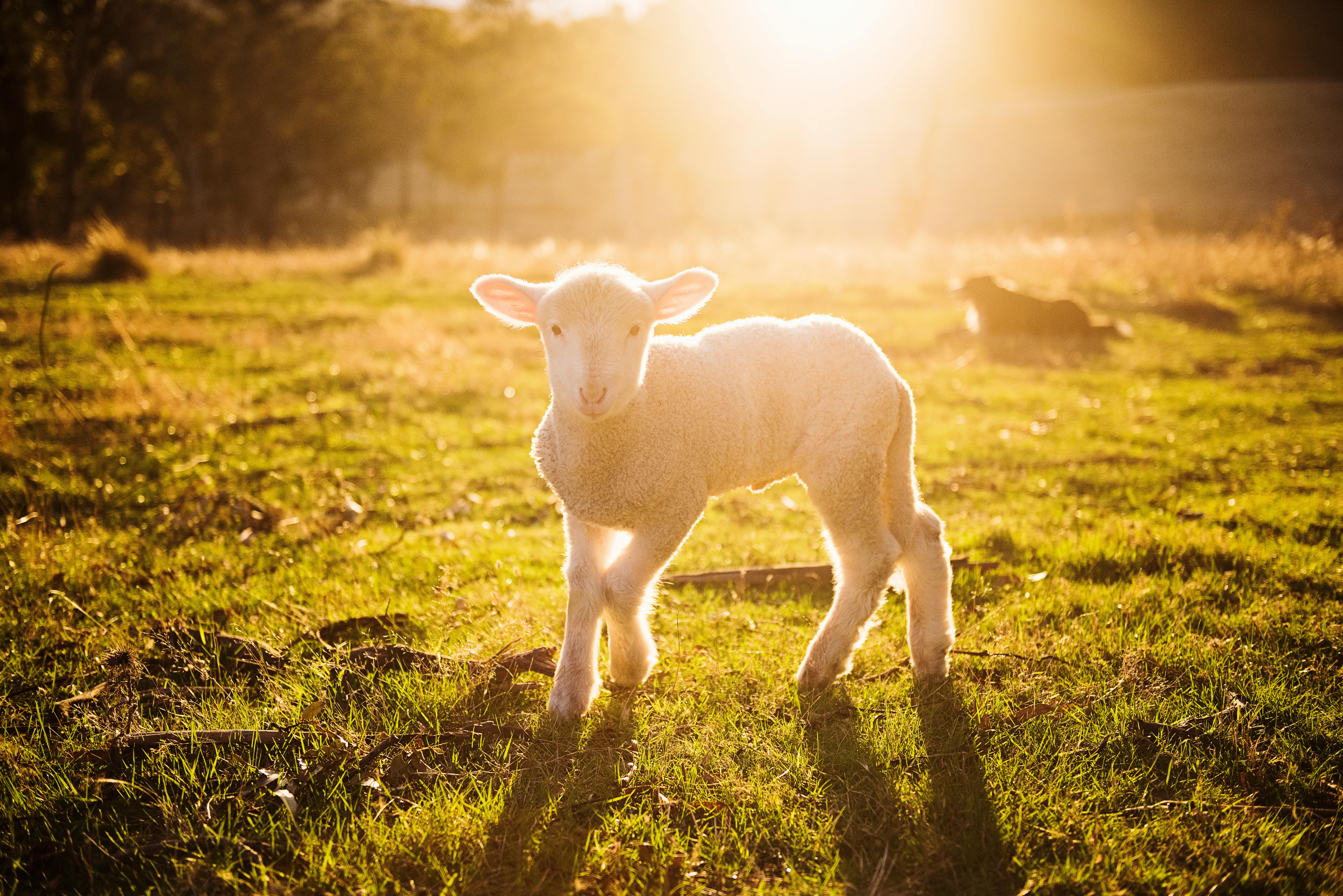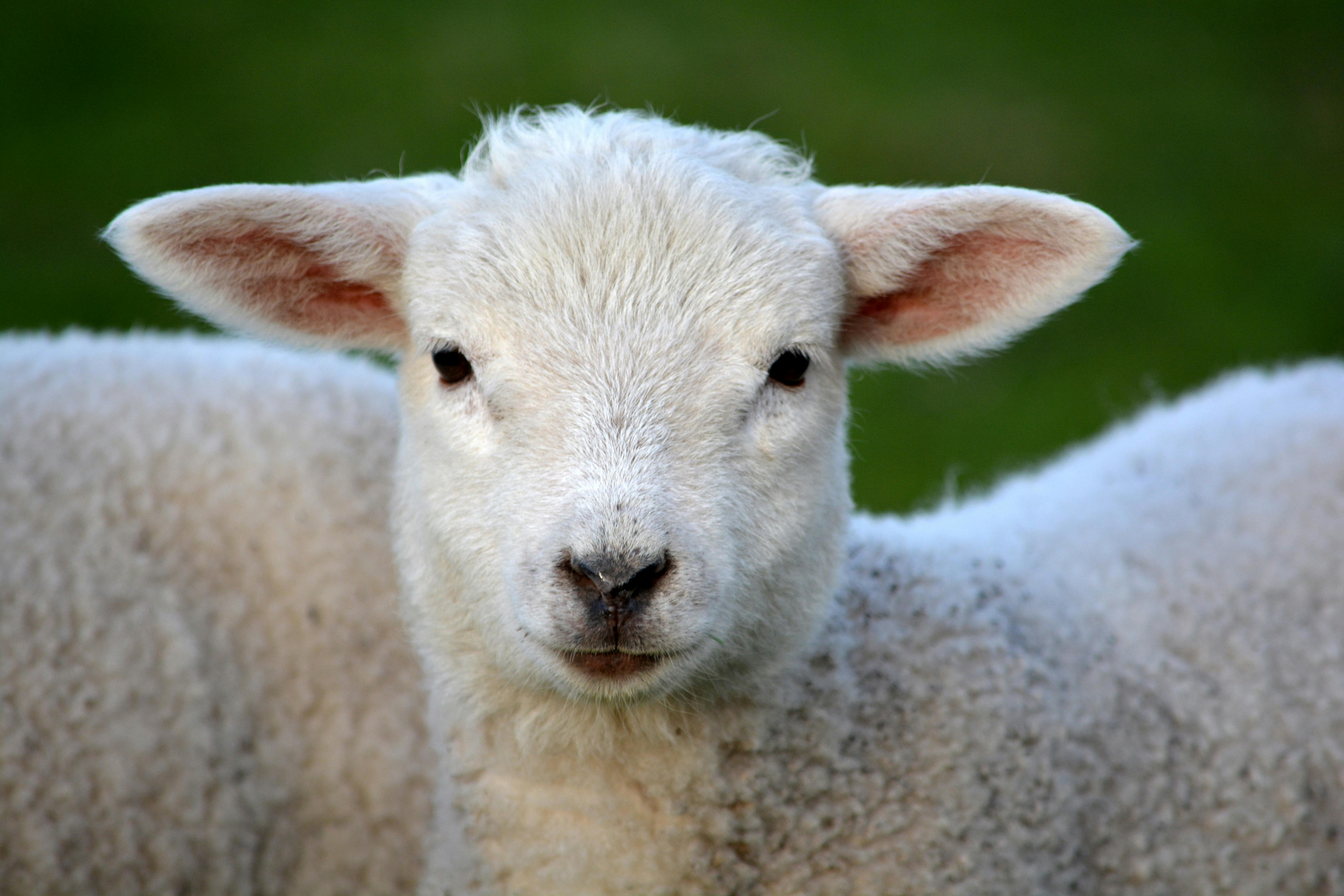Sheep are four-legged, horned mammals that belong to the bovidae family of animals. They are most commonly found in the mountainous regions of Europe, Asia, and North America and have been domesticated for thousands of years. Sheep have been used for their meat, milk, wool, and hides since prehistoric times. They are also kept as companion animals for their friendly nature and ability to be trained.Sheep are a domesticated species of mammal in the genus Ovis, commonly kept as livestock. They are typically kept for their wool, milk, and meat. Sheep are most easily recognized by their characteristic thick, woolly coat and curved horns. They are social animals and live in small herds.
Contents
Characteristics of Sheep
Sheep are considered to be one of the most iconic and recognizable animals in the world. They are typically social animals that live in herds, and they often graze on grass and other vegetation. Sheep have a thick woolly coat of fur that helps to keep them warm during the winter months. The wool can also be used for clothing, blankets, and other products. Sheep are also known for their strong sense of smell, which helps them locate food sources and evade predators. They have an excellent sense of hearing and can detect sounds from far away. Lastly, sheep are intelligent animals that are able to recognize and remember faces, as well as learn basic commands like come or stay.
Overall, sheep have many unique characteristics that make them a popular livestock animal around the world. They are relatively easy to care for and their wool is highly sought after for its warmth and versatility. Additionally, their strong sense of smell combined with their excellent hearing makes them great guard animals who can detect potential danger from afar. Lastly, they are intelligent creatures who can recognize and remember faces as well as learn basic commands.
Types of Sheep
There are a few different types of sheep which can be found around the world. The most common type of sheep is the domestic sheep, or Ovis aries. This type of sheep is often used for its wool, meat, and milk products. It is also the most widely raised species of livestock in the world. Another type of sheep found in many parts of the world is the mouflon, or Ovis musimon. This species has a different coat pattern than domestic sheep and is usually much more wild in nature.
Other breeds include Jacob, Barbados Blackbelly, Dorper, and Texel. All these breeds have different characteristics and are used for different purposes such as their wool or their meat production capabilities. Some breeds are also known to produce specific types of dairy products like cheese or yogurt.
One type of rare breed that can be found in some parts of the world is the Manx Loaghtan, which has four horns instead of two like other breeds. This breed has become endangered due to hunting and habitat destruction in its native home on the Isle Of Man.
Sheep can also be found in all sorts of colors from white to black, gray to brown and even striped! Different color patterns are created by breeding various genes together to create unique looking animals that can fetch higher prices from buyers and collectors alike.
No matter what breed you happen to come across, it’s important to remember that all sheep require proper care and attention if you want them to stay healthy and happy!
Life Cycle of Sheep
The life cycle of sheep follows a typical pattern for most animals. It starts with the birth of the lambs and goes through four distinct stages before it is considered fully grown. The first stage is the pre-weaning stage which consists of the lamb learning to walk and being introduced to solid food. This stage usually lasts around six weeks. The second stage, weaning, involves separating the lamb from its mother for feeding and typically lasts about four to six weeks. The third stage is growing up, which involves introducing a balanced diet and exercise, and typically lasts until the animal reaches adulthood at one year old. Finally, full maturity is reached when a sheep is two to three years old.
At each stage of development, sheep require different levels of care and nutrition in order to ensure optimal health and growth. During the pre-weaning stage, it is important that lambs receive plenty of milk from their mothers as well as access to grass or hay in order to develop muscle strength and coordination. Weaning requires careful monitoring in order to ensure that lambs are receiving enough nutrition without becoming overly dependent on their mothers’ milk. During this stage, lambs should also be introduced to solid food such as grains or pellets in order to help them transition off milk. During the growing up phase, it is important that sheep have access to plenty of grass or hay as well as high quality feed in order to help them reach their adult size quickly.
Once a sheep has reached full maturity at two or three years old, it can be bred and will be able to produce offspring for many years if cared for properly. In addition, mature sheep can provide wool for clothing or other uses as well as meat for consumption depending on the breed of sheep being raised. With proper care and nutrition throughout its life cycle, a healthy sheep can live up to 15 years or more!
Feeding Habits of Sheep
Sheep are herbivores, meaning they feed on plants. Their diet consists mostly of grasses, but they also consume other herbaceous plants, including legumes, forbs and shrubs. They prefer to graze on short grasses and forbs when available, as these are easier to digest. Sheep also feed on hay or silage which is made up of dried grasses and other plant material. Hay is used as a supplement during winter or dry seasons when fresh grass is not available. Additionally, sheep may also consume grains and commercial sheep feeds which are a mixture of grains and minerals.
Sheep have four stomachs that help them digest the plant material they eat. The four stomachs help to break down the complex carbohydrates found in plants by bacteria fermentation in the rumen. This process allows them to obtain energy from the plants they consume that would otherwise be unavailable.
In general, sheep grazing habits depend on the season and availability of food sources. During summer months they may graze most of the day while in winter months they may spend more time consuming hay or commercial feeds that are provided by farmers. Sheep have a natural tendency to overgraze an area so it is important for farmers to manage their grazing areas in order to ensure healthy pastures for their flock.

Habitat and Distribution of Sheep
Sheep are found in many parts of the world, with the highest numbers inhabiting Central Asia and parts of the Middle East. They typically inhabit pasturelands and open woodlands. Sheep can survive in a wide range of habitats, including grassland, moorland, mountain regions, deserts, and even arctic tundra. In addition, they can live in areas with both cold and warm climates.
The domestication of sheep is thought to have originated around 8000-9000 BC in what is now Iran or Iraq. From there it spread throughout Europe and Asia. Today, there are over three billion sheep worldwide, with the majority found in Australia, New Zealand, China, India, Pakistan and Iran. In addition to these countries there are also large populations of sheep in Argentina, Canada, Russia and Turkey.
Behavioral Characteristics of Sheep
Sheep are generally considered to be docile animals that are content to graze in pastures and require little attention from humans. They have an innate tendency to flock together, which makes them relatively easy to herd and manage. Sheep also have a strong sense of curiosity, often exploring their environment with enthusiasm and inquisitiveness.
Sheep are highly social animals and prefer the company of other sheep. They tend to form close bonds with one another and become distressed when isolated or separated from their flock. Sheep can recognize the faces of other sheep and humans, even if they have not seen each other for a long period of time.
When it comes to defending themselves against predators, sheep demonstrate a range of behaviors. These include running away, making loud noises, or even attacking the predator with their horns or hooves. Sheep will also instinctively band together in order to protect themselves from perceived danger.
Overall, sheep are gentle animals that require minimal care from humans. They are capable of forming strong social bonds and displaying defensive behaviors when threatened by predators or other environmental elements. With proper management, sheep can continue to provide valuable resources including wool, milk, meat and hides for many years to come.
Reproduction and Life Span of Sheep
Sheep reproduce sexually and can give birth to multiple lambs in a single birth. The gestation period for sheep is five months, after which the ewe (female sheep) will give birth to one or more lambs. The typical litter size of a sheep is two lambs, but it can range from one to five depending on the breed. Lambs are usually born with a thick coat of wool, and they are able to stand within minutes of birth.
The average lifespan of a sheep is between 10 and 12 years, although some breeds can live up to 15 years or longer. Sheep have an average lifespan in captivity that is slightly longer than in the wild due to better care and nutrition. Wild sheep may not live as long as those in captivity because of predation, disease, and other factors.
The breeding season for sheep usually occurs from October through December, but this can vary depending on the breed and climate. During this time, rams (male sheep) will mate with ewes in order to produce offspring. After mating has occurred, lambs will be born in late spring or early summer.
Sheep are typically sheared once per year during the spring months when their coats are at their thickest. This helps keep them cool during the summer months and also produces wool for human use. Wool production is important for many farmers who rely on it as a source of income.

Conclusion
Sheep are an integral part of animal husbandry and human civilization. They are a source of food and clothing, as well as a symbol of wealth and prosperity. Sheep are also incredibly adaptable animals, able to thrive in many different climates and environments. Through selective breeding, they have been developed into many different breeds with various traits that make them useful for different purposes.
Sheep are also intelligent animals with strong social bonds. They are capable of recognizing individual people and other sheep, as well as forming complex relationships with humans and other animals. With the right care and handling, these animals can provide many years of companionship and joy to their owners.
Overall, sheep provide an incredible array of benefits to humans and the environment in which they live. From providing food, clothing, and companionship to helping maintain balanced ecosystems; these animals are essential to maintaining traditional farming practices while still offering humanity a wide range of uses.
In conclusion, sheep are an incredibly valuable animal species that has long been associated with human civilization throughout history. Not only do they provide us with food, clothing, companionship, but they also help maintain balanced ecosystems in their native habitats. As we move forward into the future, it is important that we continue to treat this species with respect and care so that they can continue to benefit humanity in the years ahead.

0 Comments